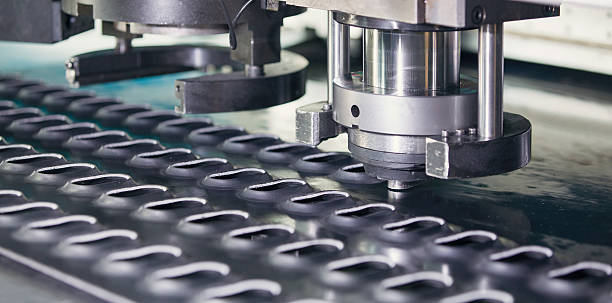Designing for the Future: The Role of CAD in Shaping Sheet Metal Processing and CNC Precision+ View more
Designing for the Future: The Role of CAD in Shaping Sheet Metal Processing and CNC Precision
+ View more
Date:2023-11-20 16:14
Introduction:
In the ever-evolving landscape of sheet metal processing and CNC (Computer Numerical Control), the critical role of Computer-Aided Design (CAD) is paramount. This article delves into the transformative impact of CAD technologies, exploring how they are shaping the future of sheet metal processing and CNC precision. From conceptualization to fabrication, CAD is driving innovation and efficiency in the design phase, setting the stage for the manufacturing processes that follow.

1. Digital Evolution: The Foundation of CAD Design:
CAD serves as the digital backbone of modern sheet metal processing and CNC. Its evolution from traditional 2D drafting to sophisticated 3D modelling has revolutionized the design phase. CAD provides engineers and designers with the tools to create intricate, precise, and visually realistic models that serve as the blueprint for sheet metal components and CNC machining.
2. Enhanced Collaboration and Iteration:
CAD facilitates seamless collaboration among design teams, engineers, and manufacturers. Through cloud-based platforms and real-time collaboration features, stakeholders can work on the same design simultaneously, fostering quicker decision-making and reducing design cycles. Iterative design processes are enhanced, allowing for rapid adjustments based on feedback and evolving requirements.
3. Precision Engineering with 3D Modeling:
The shift from 2D to 3D modelling in CAD has redefined precision engineering. Engineers can visualize sheet metal components in three dimensions, identifying potential issues and optimizing designs for CNC machining. This precision ensures that the final product meets stringent quality standards, minimizing errors in the manufacturing process.
4. CAM Integration for Seamless Transition to CNC Programming:
The integration of Computer-Aided Manufacturing (CAM) with CAD streamlines the transition from design to CNC programming. CAM software interprets CAD models, generating toolpaths and instructions for CNC machines. This integration ensures a seamless flow of information, reducing manual intervention and minimizing errors during the transition from design to production.
5. Optimizing Material Usage and Reducing Waste:
CAD enables engineers to optimize material usage during the design phase, contributing to sustainability and cost-effectiveness. Through virtual simulations and nesting algorithms, designers can minimize material waste, ensuring that sheet metal components are fabricated with maximum efficiency and minimal environmental impact.
6. Simulation for Performance Analysis:
CAD incorporates simulation tools that allow engineers to analyze the performance of sheet metal components under different conditions. This includes stress analysis, thermal simulations, and fluid dynamics. By simulating real-world conditions, engineers can refine designs, ensuring that the final product meets performance criteria and industry standards.
7. Designing for Additive Manufacturing (AM) Integration:
As additive manufacturing gains prominence, CAD plays a pivotal role in designing components specifically for AM processes. CAD tools allow for the creation of complex geometries and lattice structures that are well-suited for additive manufacturing techniques. This adaptability ensures that CAD is at the forefront of shaping the future of manufacturing technologies.
8. Adapting to Industry 4.0: IoT and Connectivity in CAD:
CAD is adapting to the principles of Industry 4.0 by incorporating Internet of Things (IoT) connectivity. This enables real-time monitoring of CNC machines and feedback loops to the design phase. Designers can receive data on the performance of fabricated components, allowing for continuous improvement and alignment with evolving manufacturing trends.

Conclusion:
As we forge ahead into the future of sheet metal processing and CNC precision, CAD emerges as a key driver of innovation. From enhancing collaboration and precision engineering to optimizing material usage and embracing additive manufacturing, CAD technologies are shaping the very foundation of how we design and manufacture. In this era of Industry 4.0, the integration of CAD ensures that sheet metal processing and CNC evolve as interconnected components of a digitally driven and efficient manufacturing ecosystem. Designing for the future means leveraging the full potential of CAD to create products that are not only precise but also adaptive to the dynamic landscape of modern manufacturing.
Share to:
Recommend wonderful blog posts

